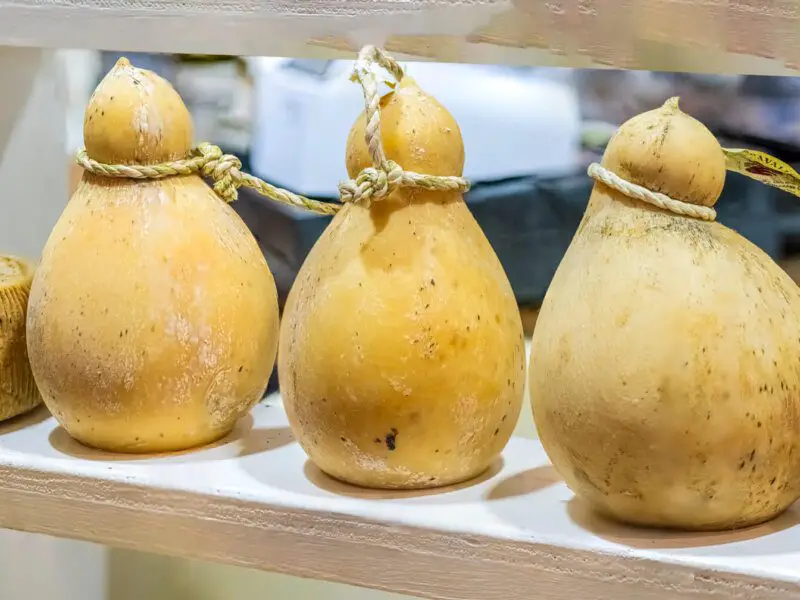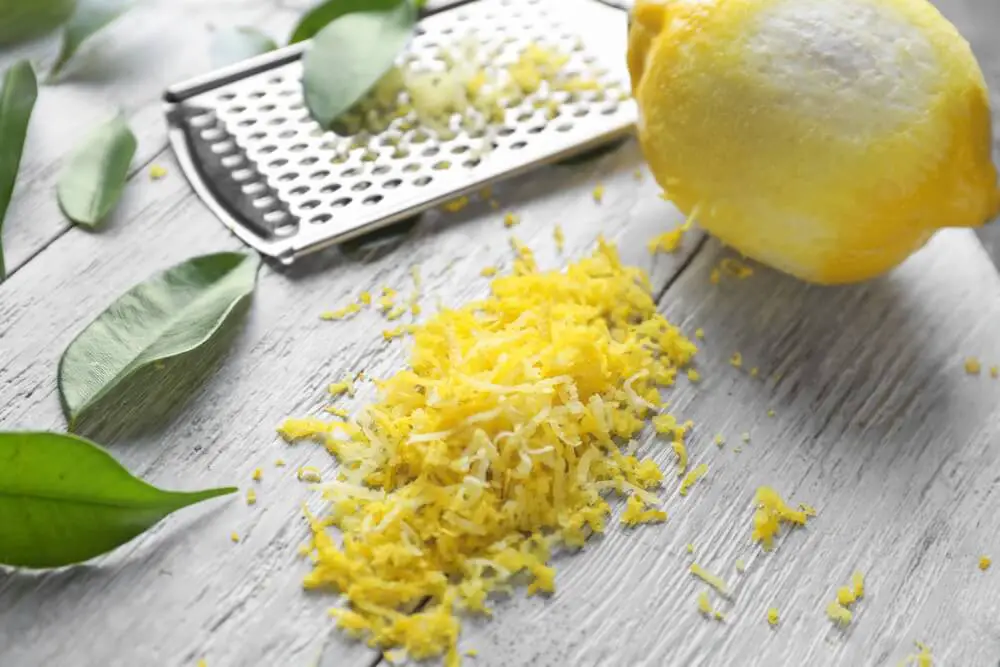Are you a cheese lover who’s been on a quest to explore the world of Italian cheeses? If so, you’ve probably heard of the tantalizing duo, Caciocavallo and Scamorza. These cheeses, with their exotic names, have been winning over taste buds across the globe. But what sets them apart? How do you choose between these Italian delights when you’re whipping up a pizza, pasta, or simply craving a creamy, melty snack?
Welcome to the ultimate cheese showdown, where we’ll dive deep into the world of Caciocavallo and Scamorza. We’re about to embark on a flavorful journey that explores their origins, aging processes, distinct characteristics, and, most importantly, how they stack up against each other in the epic battle of taste and texture. By the end of this cheesy adventure, you’ll be ready to pick a side in the Caciocavallo Vs. Scamorza showdown.
What is Caciocavallo?
Let’s kick off with the veteran of the cheese world, Caciocavallo. This Italian gem, with roots stretching back to the 14th century, is a staple in many Italian kitchens. The name itself is an ode to its unique production method. “Cacio” means cheese, and “cavallo” refers to the cheese being bound in pairs, straddled over a horizontal stick like a horseback rider – a true work of art!
What’s in the Cheese?
Caciocavallo can be crafted from either sheep’s milk or cow’s milk, and it even accommodates raw or pasteurized milk enthusiasts. After the milk is heated, and the curds form, the magic begins. The curds are stretched, much like the process of crafting Mozzarella cheese. Once they’re suitably stretched, the curds are molded into those characteristic pear or gourd shapes, and they take a brine bath. This cheese is not just a pretty face; it’s got substance.
The Age Factor: A Cheese’s Coming of Age
Caciocavallo ages like a fine wine. While it can be eaten fresh as a delightful table cheese, it truly shines when aged for two or more months. This aging process works wonders on its texture, flavor, and appearance.
The young Caciocavallo displays a smooth texture, a mild taste, and just a hint of saltiness. But as it ages, it evolves. The milky white transforms into a deeper yellow, and it becomes saltier. The flavors become sharper and spicier, and the texture gains a delightful granular quality. You could say it matures like a seasoned pro.
Varieties Galore
In the world of Caciocavallo, there’s no shortage of diversity. Caciocavallo Podolico and Caciocavallo Silano are just a couple of the popular varieties. The older Caciocavallo cheeses are the ones you’d want for grating, perfect for sprinkling over your pasta or pizza. It’s like a flavor explosion in your mouth.
Now, let’s switch gears and enter the arena with our contender, Scamorza.
What is Scamorza cheese?
Scamorza is the young gun, the wild card in this cheese showdown. While it may not have the centuries-old legacy of Caciocavallo, it certainly knows how to make an entrance.
A Brief Introduction to Scamorza
Hailing from the sunny regions of Southern Italy, primarily Apulia and Calabria, Scamorza has won the hearts of cheese enthusiasts throughout the nation. It’s traditionally made from pasteurized cow’s milk, but it’s not picky; it also gets along with sheep’s milk and even a combination of the two.
Shaping Up the Scamorza
Scamorza gets its name from the Italian verb “scamozzare,” which means “to remove.” This cheese is initially shaped into a round form, and then, about one-third of the way, it’s tied with a string. This simple technique gives it the iconic pear shape during the ripening process. And speaking of ripening…
The Two-Week Wonder
Unlike its seasoned rival, Caciocavallo, Scamorza doesn’t need too much time to come into its own. A mere two weeks of aging, and it’s ready to rock your world. The string it’s tied with imparts that appealing pear shape, making it not only delightful to taste but also pleasing to the eye.
Shady Business: Smoked Scamorza
Scamorza isn’t content with just being great; it has a smoky alter ego – Scamorza affumicata. After the standard ripening, it’s smoked over burning straw. This adds a slightly darker color and a hint of sweetness to the cheese. The non-smoked variety is known as Scamorza bianca.
Pasta Filata Magic: A Common Thread
Both Caciocavallo and Scamorza belong to the pasta filata family of cheeses. What’s the secret behind this family’s appeal? It’s all about the unique way the curds are stretched during production.
The Art of Stretching
The curds are like elastic bands in hot water, and this process gives the cheeses their signature meltability and stringiness. This quality makes them perfect for pizzas and dishes like lasagna where you want that deliciously gooey texture that stretches as you take that first, irresistible bite.
The Ultimate Showdown: Caciocavallo Vs. Scamorza
And now, the moment you’ve been waiting for – the epic battle of taste and texture between Caciocavallo and Scamorza.
Texture Smackdown: Who’s the Chewiest?
When it comes to texture, Caciocavallo is the older, wiser sibling. Aged for two or more months, it achieves a firmer texture that stands up to grating like a champ. It’s perfect for sprinkling over your pasta, offering a satisfying crunch with each bite.
On the other hand, Scamorza is the younger, slightly rebellious sibling, aging for a mere two weeks. This gives it a semi-soft texture with an elastic and stringy quality, making it a joy to pull apart. If you’re into that delightful chewy sensation, Scamorza is your go-to cheese.
Flavor Face-Off: Who Packs a Punch?
Flavor is where these two cheeses truly differentiate themselves. Caciocavallo, with its aging process, delivers a more intense and mature flavor profile. As it ages, it becomes saltier, develops a pungent kick, and offers a granular texture. It’s a bold, spicy experience that adds depth to any dish.
Scamorza, in contrast, is all about freshness and mildness. It maintains a milky, creamy essence that’s not too overpowering. There’s even a hint of smokiness in the affumicata variety, but it remains subtle and sweet. If you prefer a milder, creamy note in your recipes, Scamorza is your ideal cheese.
How to Use Caciocavallo and Scamorza in Your Kitchen
So, how do you put these fantastic cheeses to work in your kitchen? We’ve got some ideas:
Caciocavallo Creations:
- Grate it over your pasta for a zesty, spicy kick.
- Slice it and pair with fresh fruits for a sophisticated appetizer.
- Melt it on your pizza for an authentic Italian experience.
- Use it in baked dishes to enjoy the unique texture it brings.
Scamorza Sensations:
- Slice it and serve with cured meats for a delicious charcuterie platter.
- Melt it over grilled vegetables for a creamy, smoky flavor.
- Enjoy it on sandwiches or panini for a gooey, cheesy delight.
- Use it in salads or cold pasta dishes to add a mild, milky touch.
Final Thoughts: The Winner Is…
Caciocavallo and Scamorza are both winners in their own right. Your choice between the two depends on your flavor and texture preferences and the dish you’re preparing.
If you’re looking for a bolder, firmer cheese that can stand up to grating and delivers a spicy punch, Caciocavallo is your champion. It’s a taste of tradition and centuries-old cheese craftsmanship.
On the other hand, if you prefer a milder, creamier cheese with a delightful chewy texture, Scamorza is the cheese for you. It’s the new kid on the block with a subtle smoky twist.
Whichever cheese you choose, you’re bound to embark on a mouthwatering culinary journey that’s pure Italian magic. So why not try both and savor the best of both worlds? After all, variety is the spice of life.
In the battle of Caciocavallo Vs. Scamorza, there are no losers – only winners who get to enjoy these fantastic Italian cheeses!



